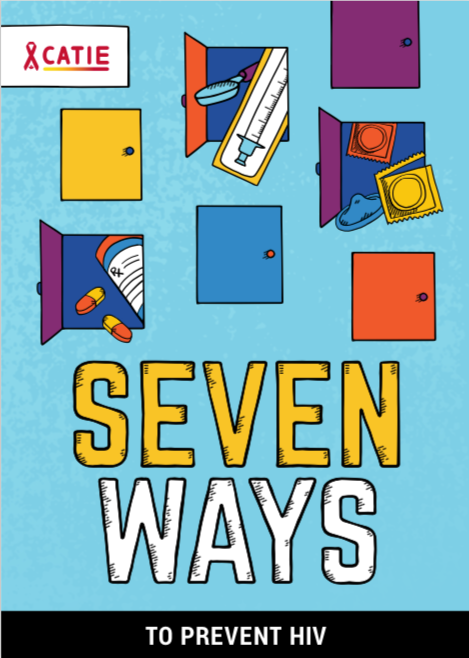You probably know about tried and true methods to help prevent getting HIV, such as using condoms when having sex and new equipment when injecting drugs. But did you know that there are also newer approaches like using HIV medications to prevent HIV? With so many choices, it’s not always easy to know which prevention method to use and when.
This booklet can help you decide which HIV prevention method (or combination of methods) will work best for you.
Note on language: Everyone has the right to use the terms that they feel most comfortable with to talk about sex and their bodies. Where we have used gendered terms in this resource, we include in brackets gender-neutral alternatives that some trans and non-binary people prefer.
What is HIV?
HIV is a virus that attacks the immune system. It is most often passed through vaginal (frontal) or anal sex, or by sharing needles and other equipment to inject drugs. When left untreated, HIV can lead to life-threatening infections and cancers. However, with treatment and care, a person with HIV can live a long and healthy life and avoid passing HIV to others. In fact, people living with HIV who are on successful treatment do not pass HIV through sex.
 How do you know if you have HIV?
How do you know if you have HIV?
The only way to know if you have HIV is to get tested.
You can have HIV and not know it. Some people have flu-like symptoms a few weeks after they first get HIV, but not everybody does. People can have HIV for years without any obvious symptoms.
You can ask a healthcare provider for an HIV test. You can also get an HIV self-test that you perform on yourself at home. Self-tests can be ordered online and may be available for free from community organizations or for purchase in some pharmacies.
How can you decide which HIV prevention method will work best for you?
Here are some questions to ask yourself as you read about the different HIV prevention options.
What is your chance of getting HIV?
While it’s impossible to know exactly how likely you are to get HIV, some activities carry a higher chance of passing HIV than others. The highest chance comes from vaginal (frontal) or anal sex or sharing equipment for injecting drugs, when no HIV prevention methods are used. The more often these activities happen, the higher the chance of getting HIV.
 What is your chance of getting other infections?
What is your chance of getting other infections?
There are other sexually transmitted and blood-borne infections (STBBIs) that can be passed through sex or from sharing equipment for using drugs, such as syphilis, gonorrhea, chlamydia, and hepatitis B and C. Some HIV prevention methods only help to prevent HIV, while others can also help to prevent other STBBIs. If you are concerned about both HIV and other STBBIs, you can choose an HIV prevention method that also helps prevent other STBBIs. It is also a good idea to get tested regularly for other STBBIs and treated if necessary.
How much risk are you comfortable with?
Different people are comfortable with different levels of risk for HIV and other STBBIs. You have the right to set your own boundaries for what you are comfortable with and to decide what prevention method to use based on your boundaries. The people you have sex with or use drugs with also have this right.
What prevention method(s) are you most likely to use?
As you consider your options, think about which method(s) you will be most likely to use. You can use different methods depending on your needs in different situations. Sometimes you might rely on just one strategy, and other times you might use more than one. You should also consider whether or not you can use a prevention method the right way every time, because a prevention method will only work when you use it correctly.
The method(s) you choose may also depend on the prevention methods your partners are using. If you are going to rely on a method your partner is using then you need to know that they are using it the right way every time.
What are the most effective ways to prevent HIV?
There are many ways to prevent HIV. Some of these options help to prevent HIV during sex and some help if you inject drugs. Some help in both situations.
Read through the options that are available and think about what methods might work best for you and in which situations.
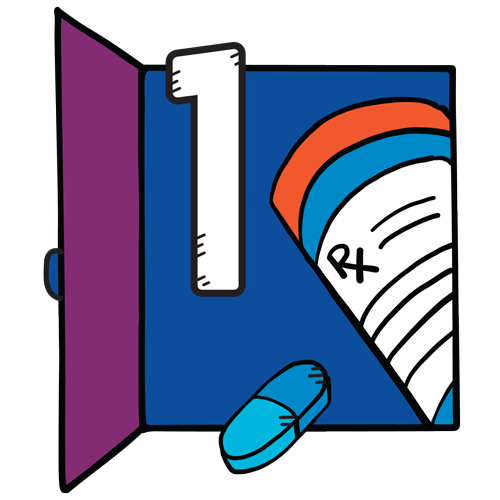 Pre-exposure prophylaxis (PrEP)
Pre-exposure prophylaxis (PrEP)
PrEP is a medication that an HIV-negative person can take to help prevent getting HIV through sex or from sharing equipment to inject drugs. It is taken on an ongoing basis, starting before and continuing after a person might come into contact with HIV. It needs to be prescribed by a healthcare provider. Most people who use PrEP take pills. A long-acting version of PrEP is also available by injection from a healthcare provider. For PrEP to work, it is important that the medication is taken as prescribed. It is rare for someone who is taking PrEP as prescribed to get HIV. Besides taking medication, PrEP also involves seeing a healthcare provider regularly for HIV testing, screening for STBBIs, monitoring for possible side effects, and ongoing support. The cost of PrEP may be covered by private and public drug plans.
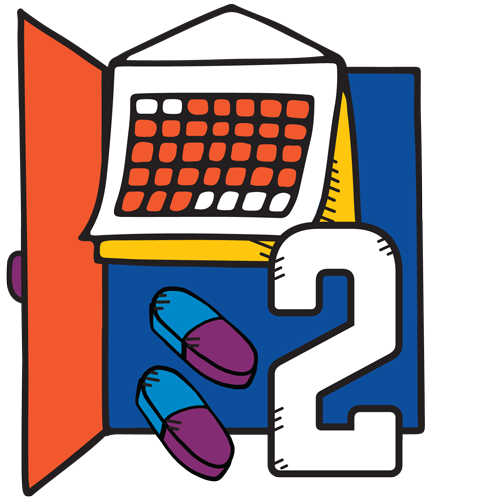 Post-exposure prophylaxis (PEP)
Post-exposure prophylaxis (PEP)
PEP is a medication that an HIV-negative person can take after they might have come into contact with HIV, to help prevent getting HIV. For example, someone might choose to use PEP after a condom breaks during sex or after they share needles or other equipment to inject drugs. It is prescribed by a healthcare provider. PEP needs to be started as soon as possible (up to a maximum of 72 hours) after a potential exposure to HIV. The sooner PEP is started, the more likely it is to work. PEP needs to be taken every day for 28 days. When PEP is taken as prescribed, the chance of getting HIV is very low. A person who wants to start taking PEP should immediately contact a healthcare provider, such as at a family doctor’s office, a hospital emergency department or a sexual health clinic. The cost of PEP may be covered by private and public drug plans.
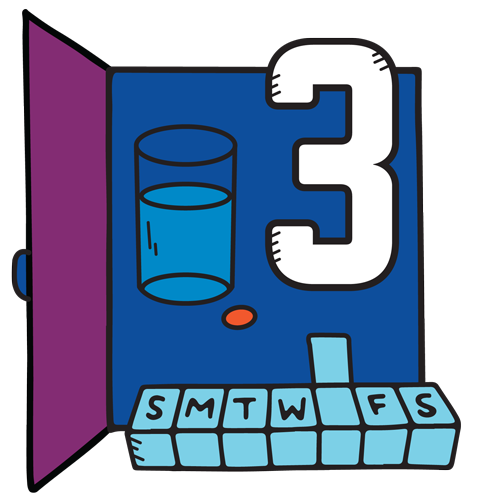 Successful treatment for people living with HIV
Successful treatment for people living with HIV
HIV treatment helps people with HIV to stay healthy, and it also helps prevent passing HIV to others. If a person takes HIV treatment as prescribed, the amount of HIV in their blood can become so low that tests can’t detect it. This is called having an undetectable viral load. When someone is on treatment and maintaining an undetectable viral load, they will not pass HIV through sex. Successful HIV treatment also lowers the chance of passing HIV through sharing equipment for injecting drugs, but we don’t know by how much. It is best to use new equipment each time you inject drugs, to prevent HIV and other infections such as hepatitis B and C.
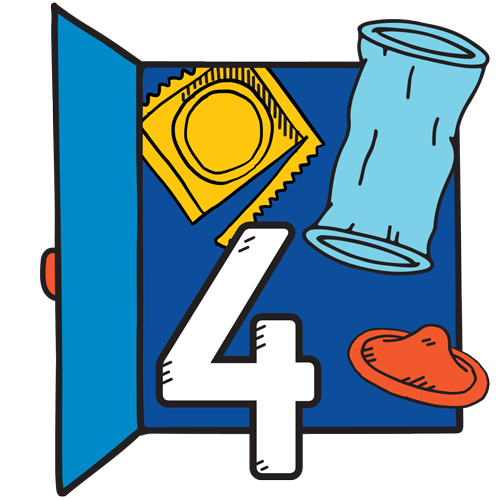 Condoms
Condoms
Condoms help to prevent HIV and other STBBIs. There are external condoms, which go over the penis (strapless), and internal condoms, which can be inserted into the vagina (front hole) or anus. The chance of getting HIV is very low if you use condoms the right way each time you have sex. Store condoms at room temperature and check the expiry date before using them. Use a water-based or silicone-based lube with them. Oil-based lube can break condoms. You can talk to a local HIV organization or other community-based organization to see where you can get free condoms in your area.
 Choosing types of sex with little or no chance of passing HIV
Choosing types of sex with little or no chance of passing HIV
Some types of sex have a lower chance of passing HIV than others. Oral sex has little to no chance of passing HIV. Fingering, handjobs, mutual masturbation and using unshared sex toys have no chance of passing HIV. However, some other STBBIs can be passed through some of these types of sex. In some situations, you might choose to avoid having vaginal (frontal) or anal sex and instead choose a type of sex with a lower chance of passing HIV.
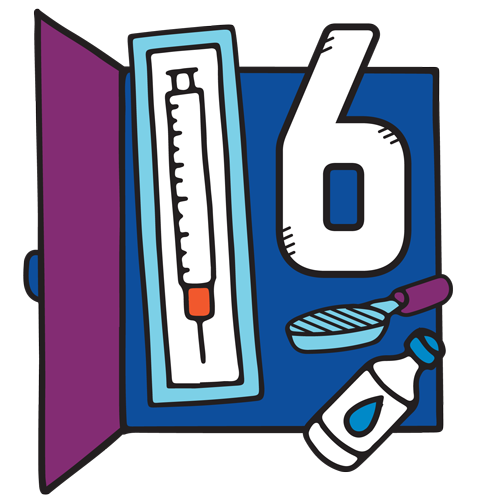 Using new equipment when injecting drugs
Using new equipment when injecting drugs
If you use new equipment each time you inject drugs, there is no risk of getting HIV or other blood-borne or bacterial infections. When injecting drugs, use a new needle and syringe, cooker, filter, sterile water and alcohol swab each time. In many communities, there are places where you can get free needles and other equipment for injecting drugs. Visit an HIV or harm reduction organization to learn what services are available in your community.
 Using drugs in ways with little or no chance of passing HIV
Using drugs in ways with little or no chance of passing HIV
There is little to no chance of getting HIV from sharing equipment to smoke or snort drugs. However, there is a chance of getting other blood-borne infections such as hepatitis B or C from sharing drug use equipment, so make sure to use your own equipment (such as a straw or pipe). For advice on safer drug use practices, talk to a harm reduction worker.
Find out more
For more in-depth information on all of these prevention methods, speak to someone at your local HIV organization or talk with a healthcare provider.
To find HIV testing, prevention and treatment services near you, visit whereto.catie.ca.

